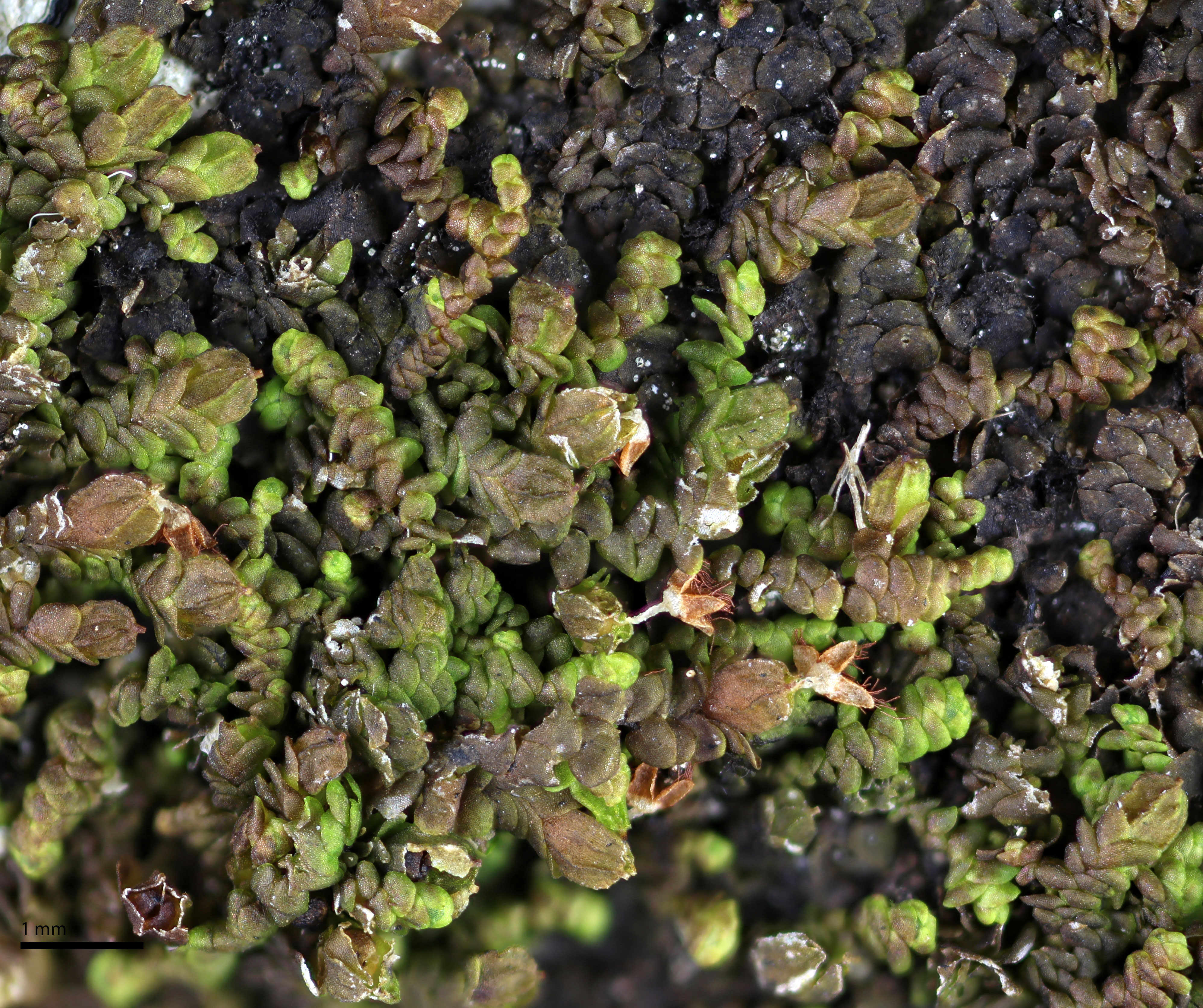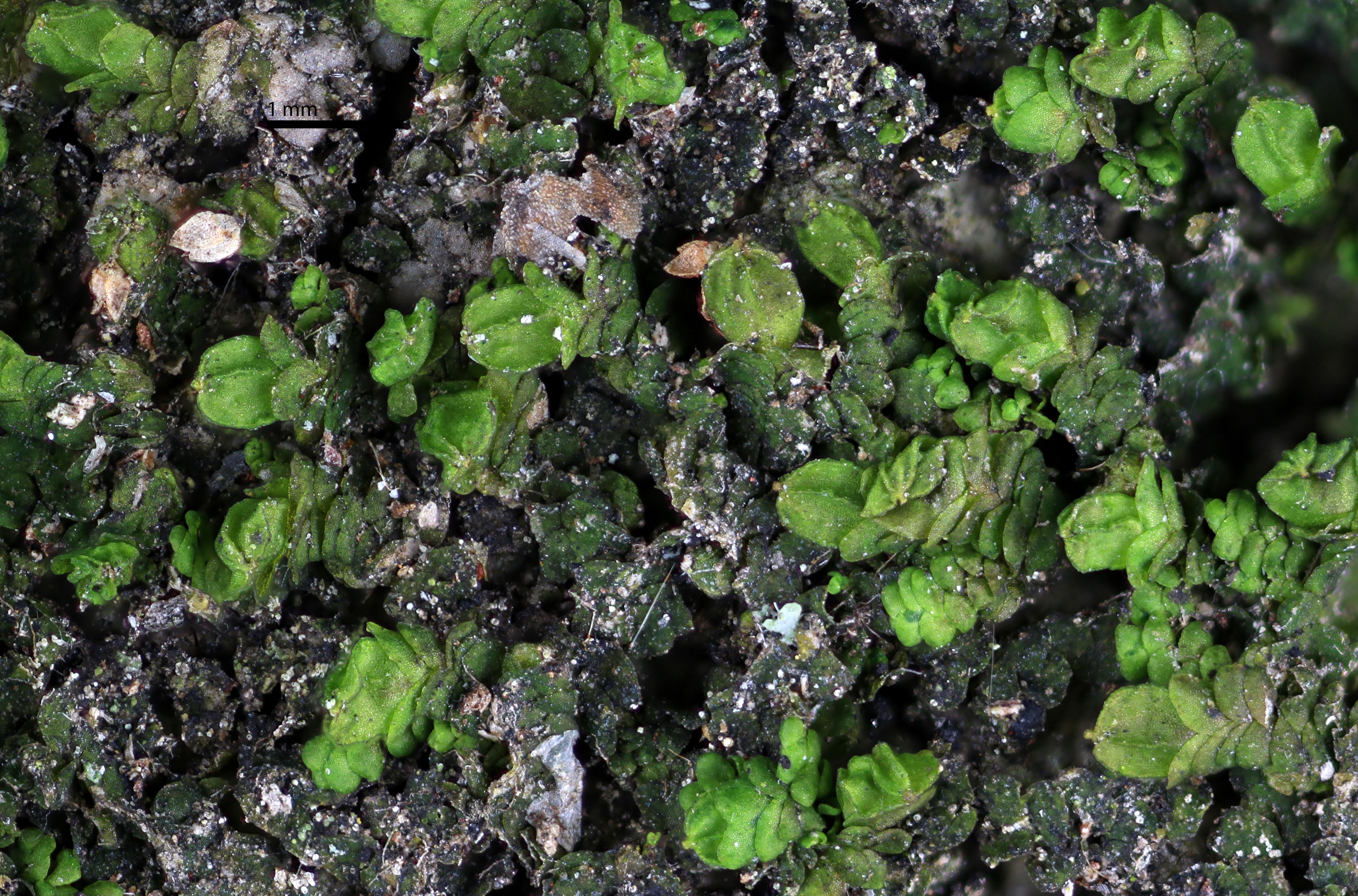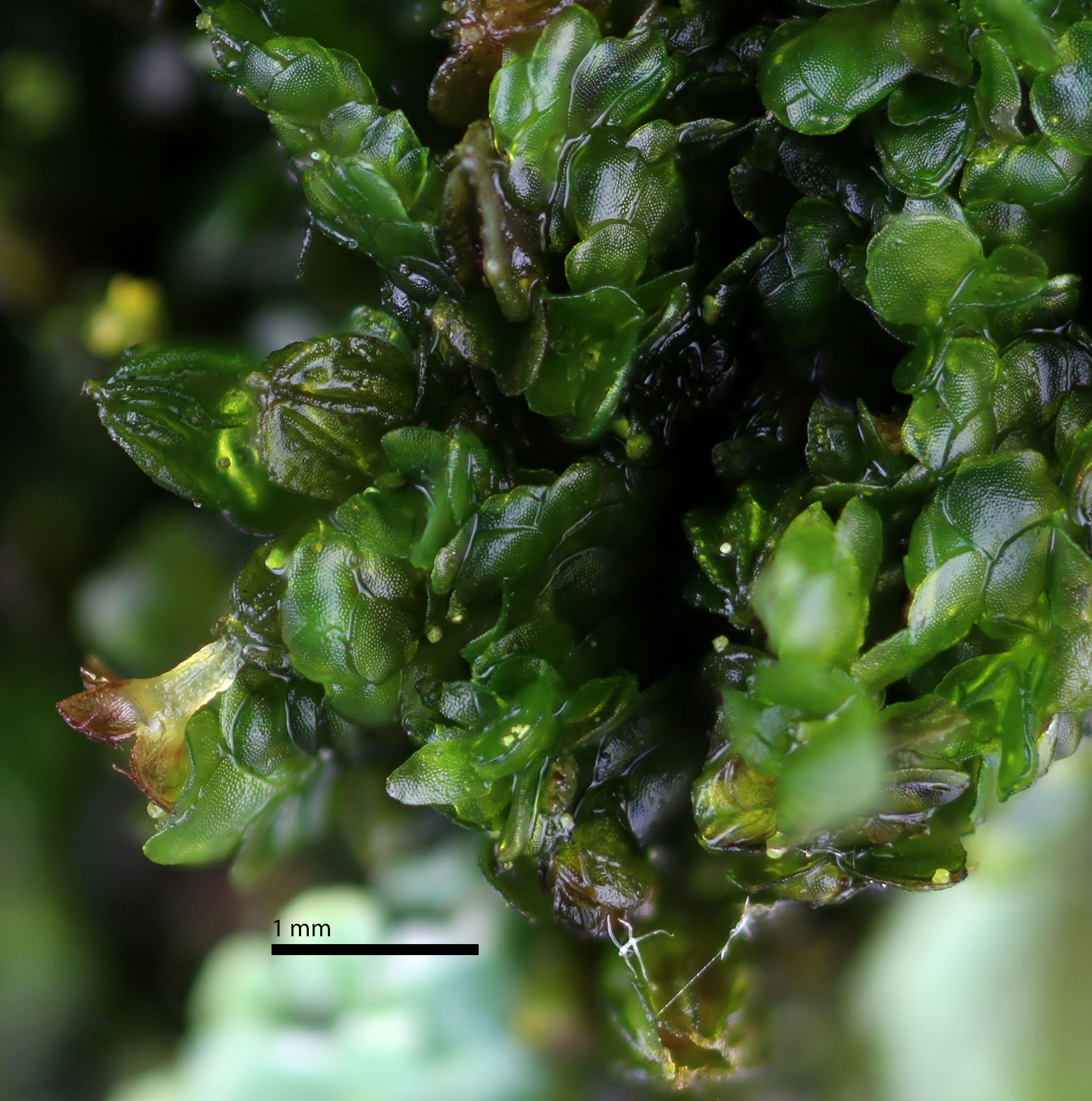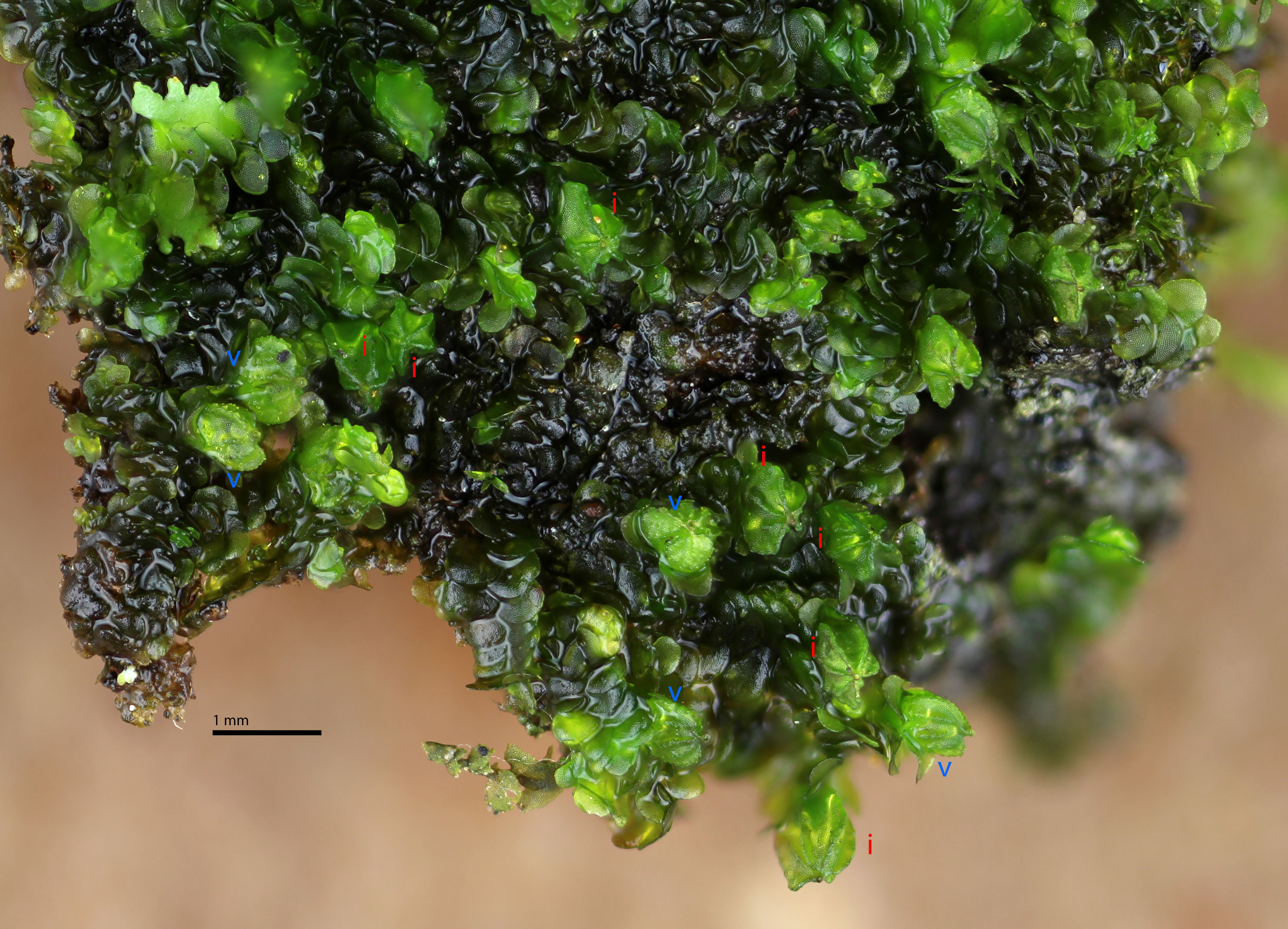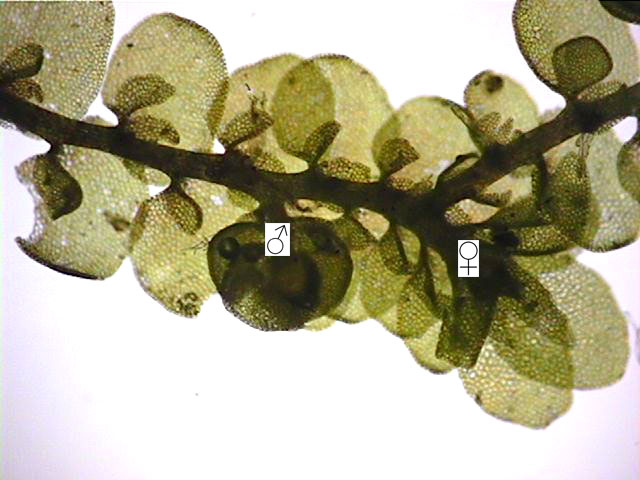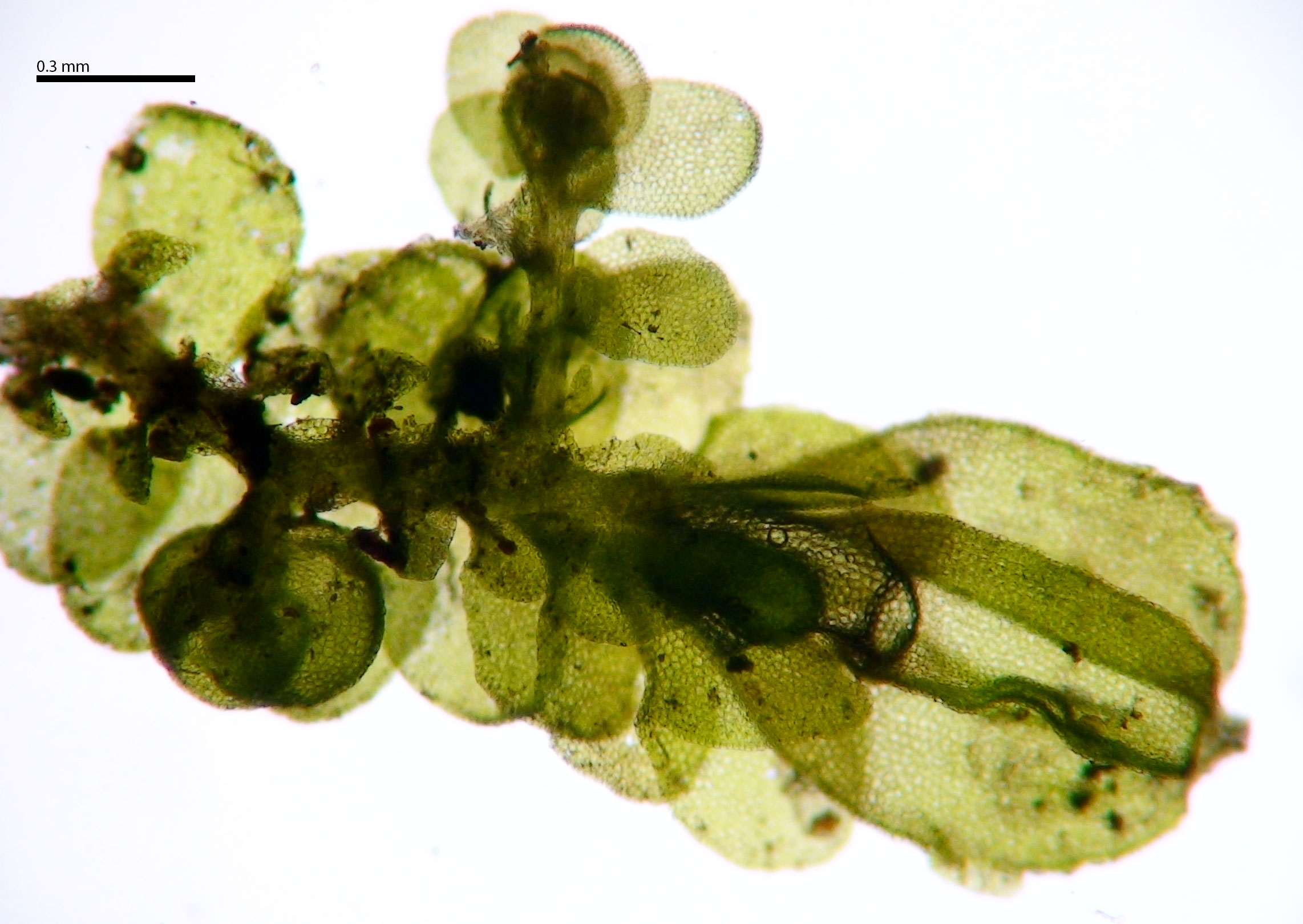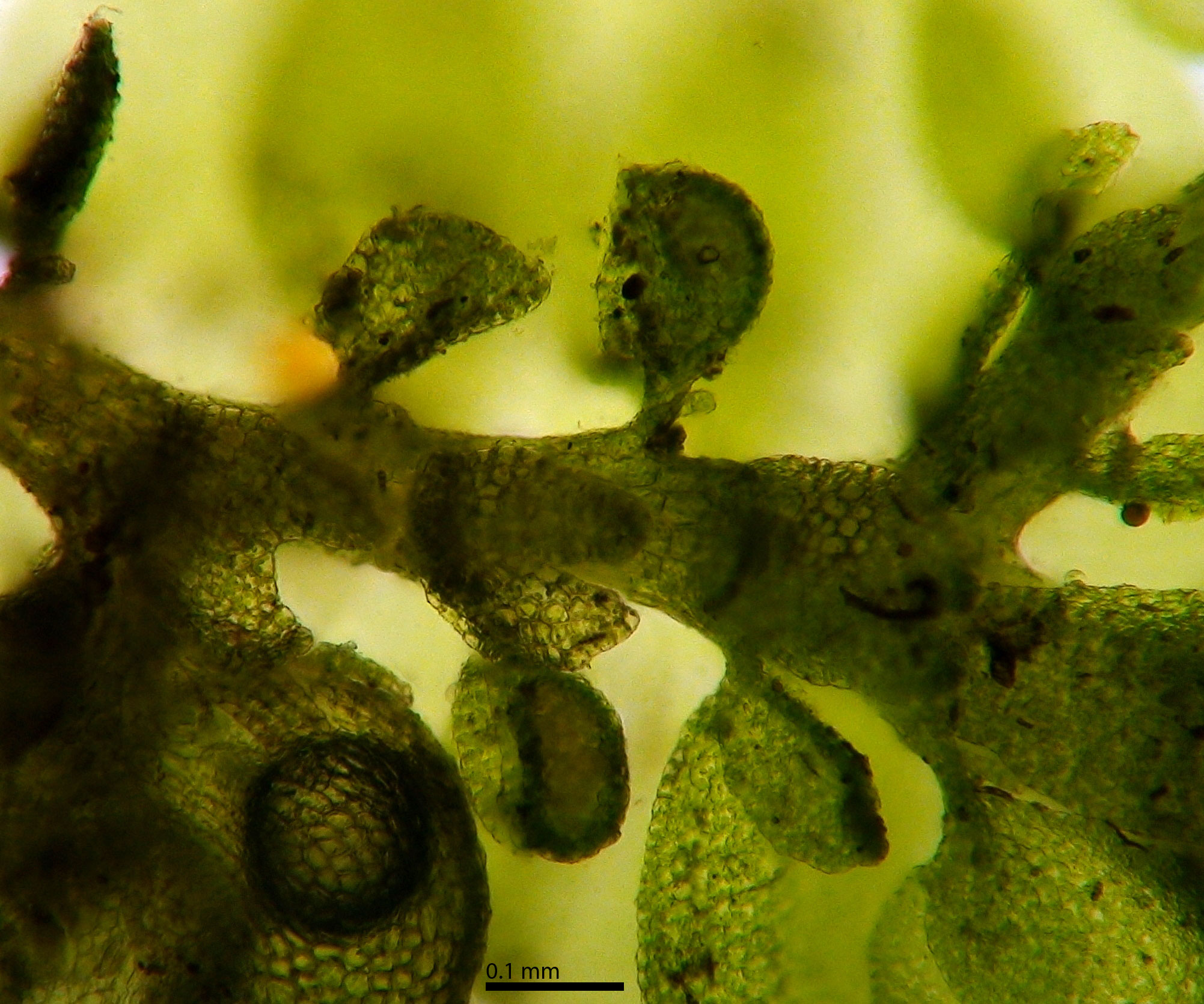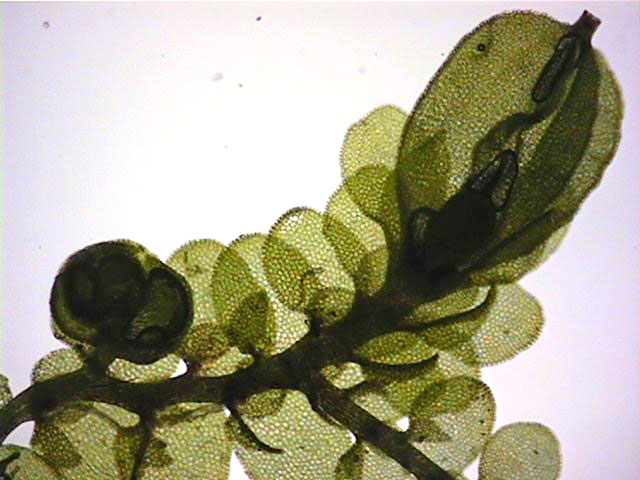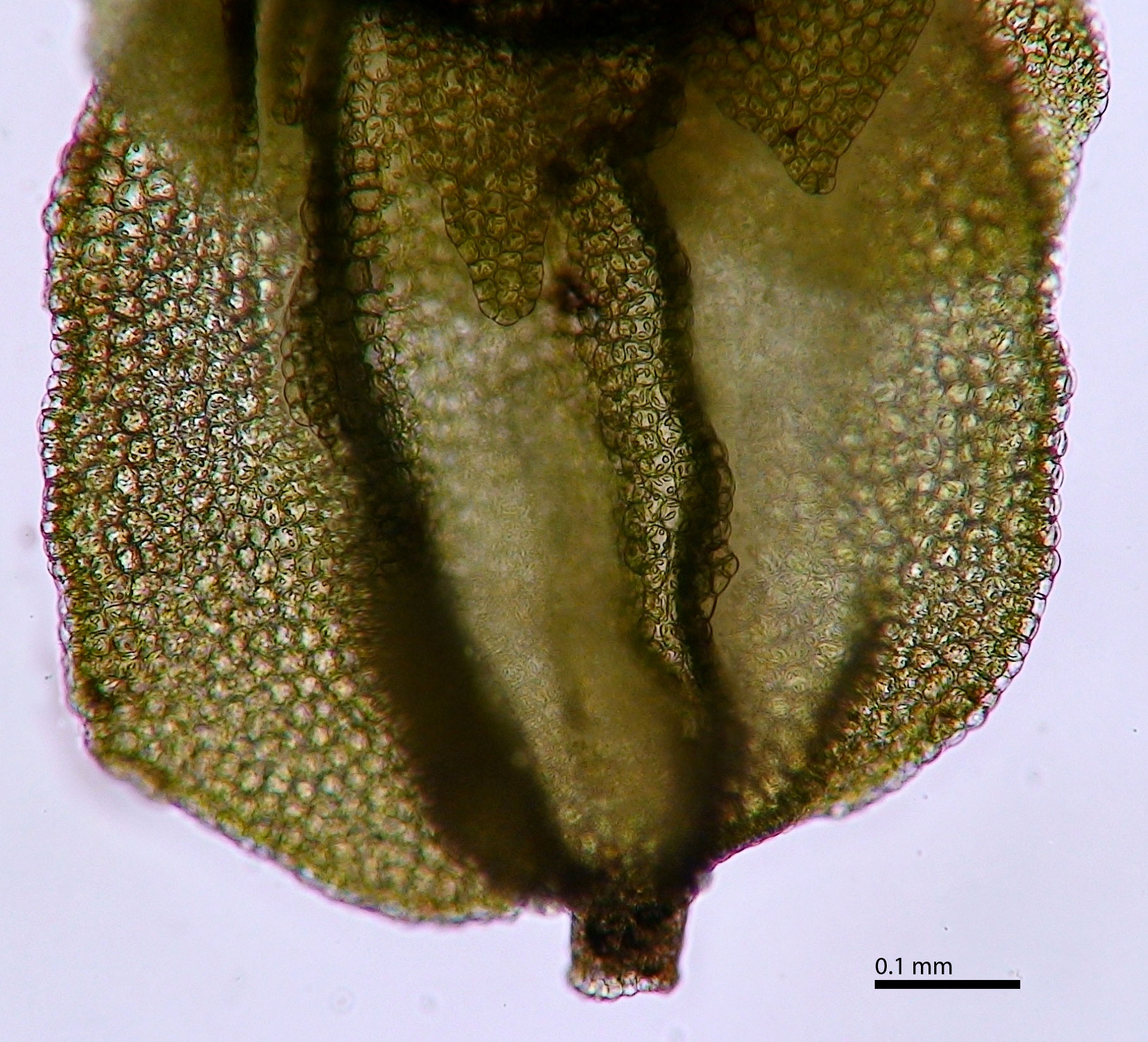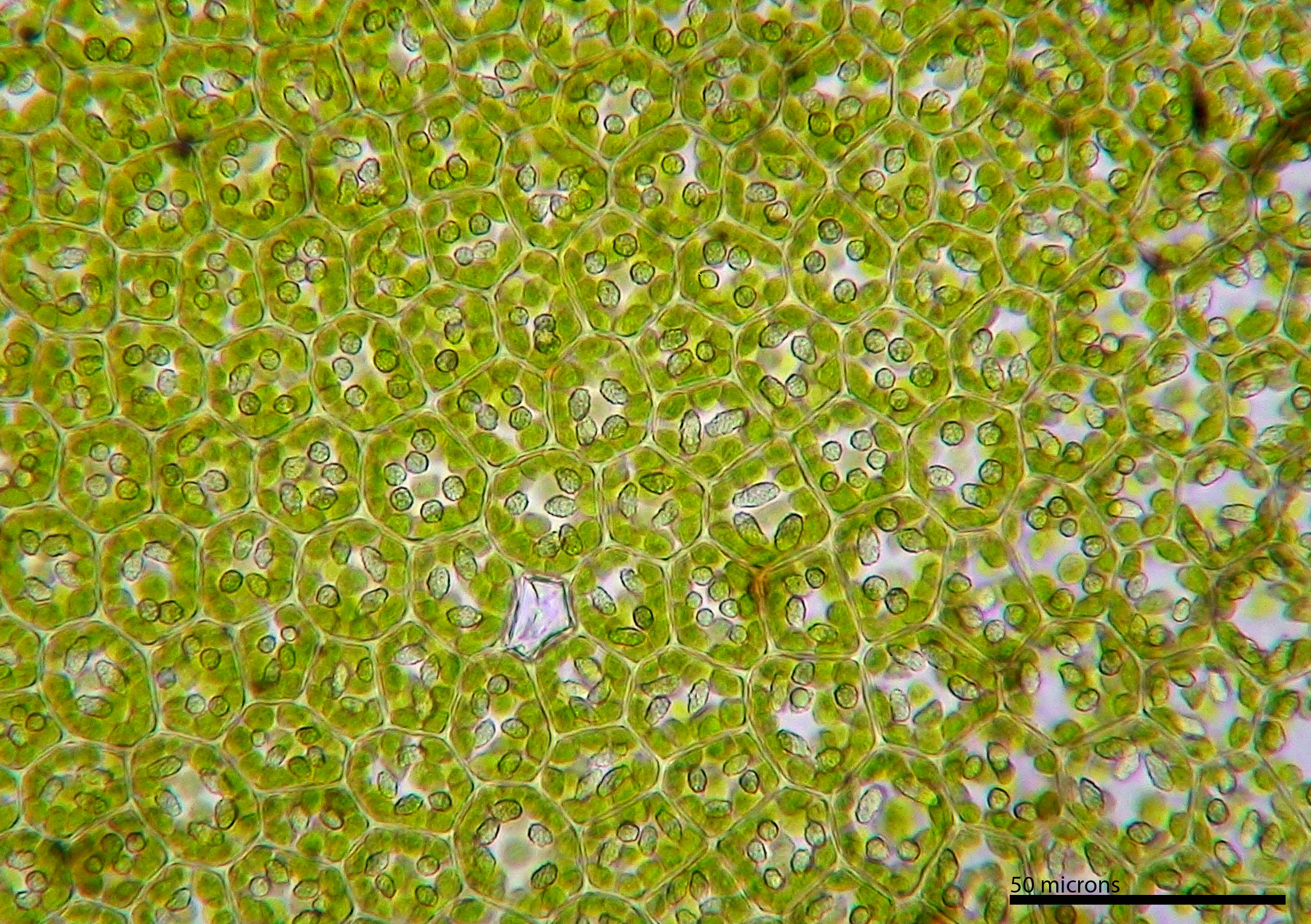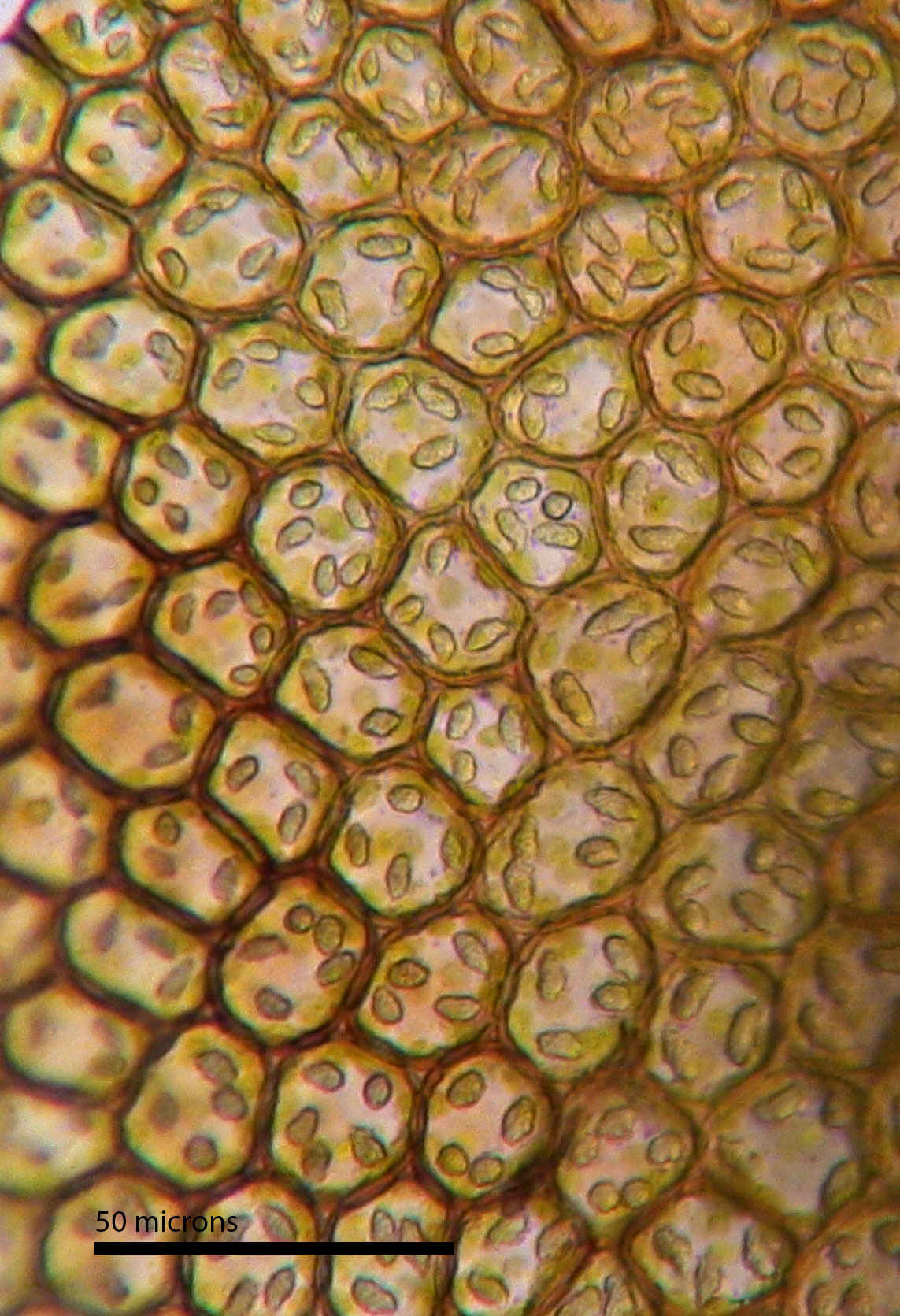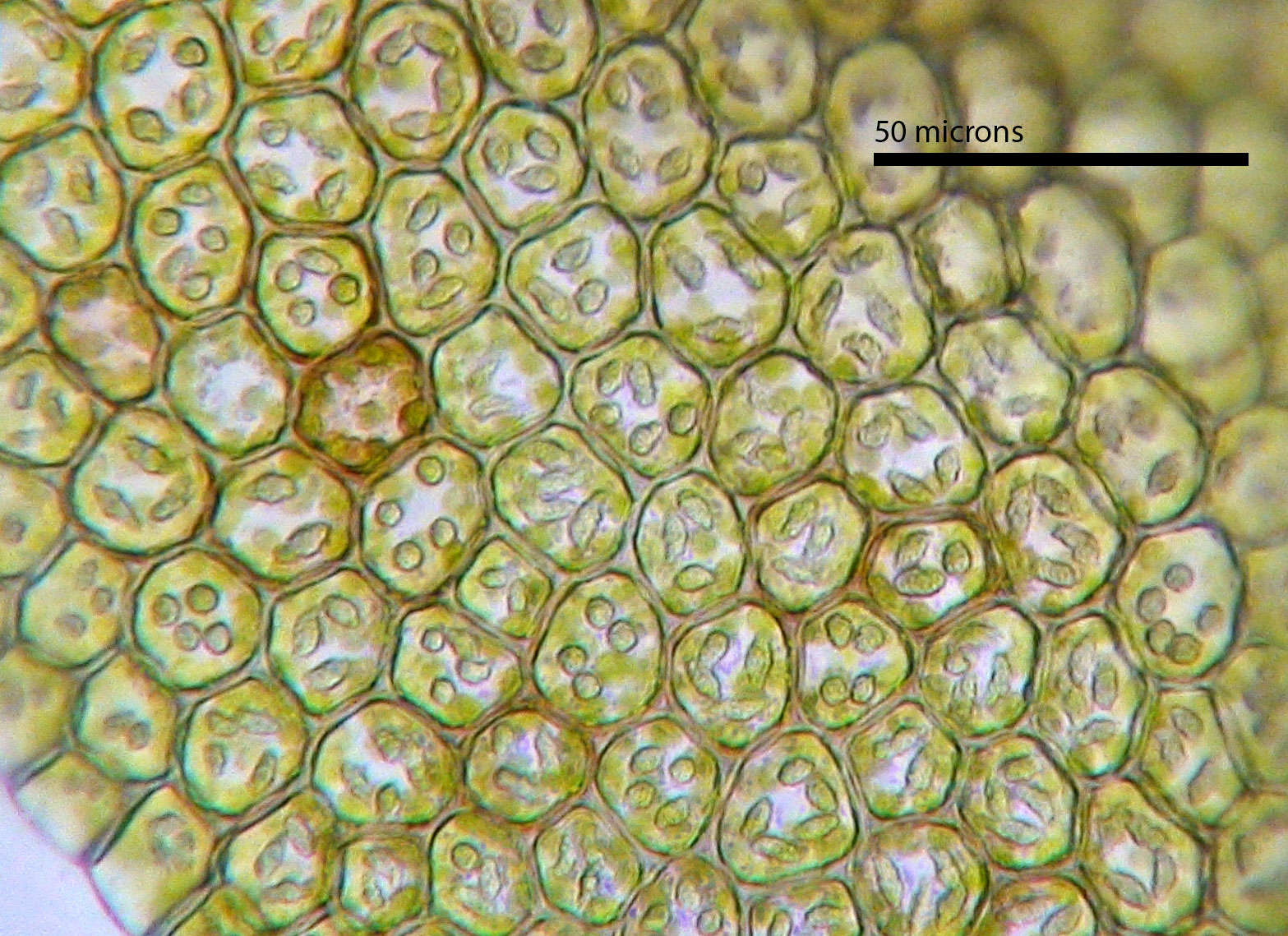Frullania inflata Gottsche
Family: Frullaniaceae
Synonyms
none regionally
NatureServe Conservation Status
G5
Distribution
Europe. North America. The North American distribution will be clarified by Atwood (FNA vol. 29, in prep.).
Habitat
On bark of various trees in humid stream ravines and dry oak-hickory forests. Occurrences on rock are common. Apparently a lowland species with scattered known occurrences in the Southern Appalachians.
Brief Description and Tips for Identification
Shoot width: to 1 mm. Color: green to brownish Cell walls in leaf lobe: without intermediate thickenings. Dorsal lobe insertion: truncate. Lobules: about as wide as long when inflated.
Monoicous. Perianth surface without turbercles; perianth with supplementary keels dorsally and ventrally
Two entities Schuster (1992) considered to be synonymous with F. inflata, F. rappii (large trigones), and F. saxicoloa (perianth mouth occluded by papillae), will be recognized as distinct species by Atwood (FNA vol. 29, in prep.). Neither taxon is yet known from the Southern Appalachians.
Salient Features
- Monoicous
- Cell walls of leaf lobe lacking intermediate thickenings, trigones small
- Lobules often explanate
- Peianths with well developed supplementary dorsal and ventral keels
A very frequent species in the southeastern U.S. but not well known from the Southern Appalachians where it appears restricted to lower elevations.
